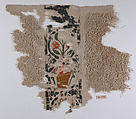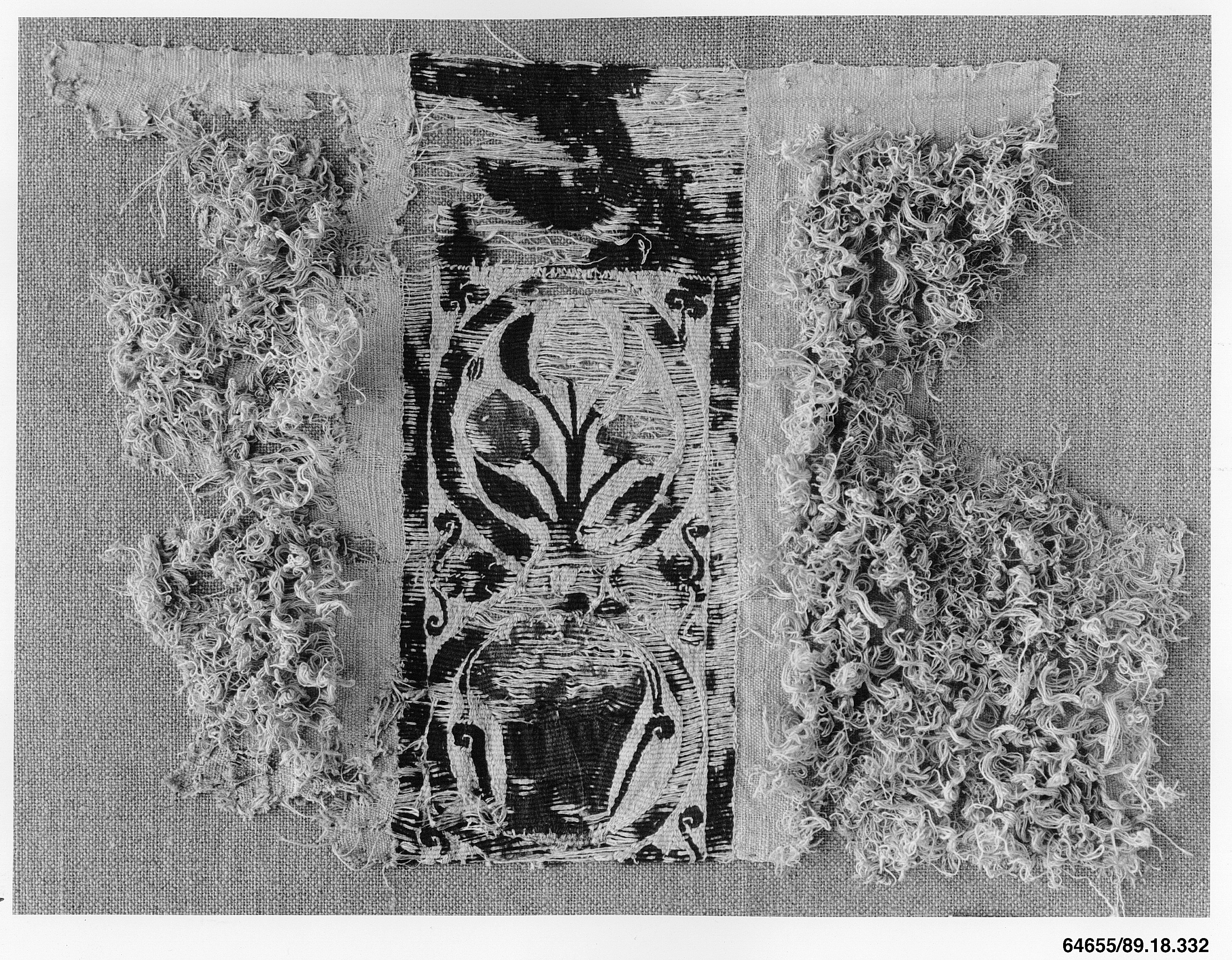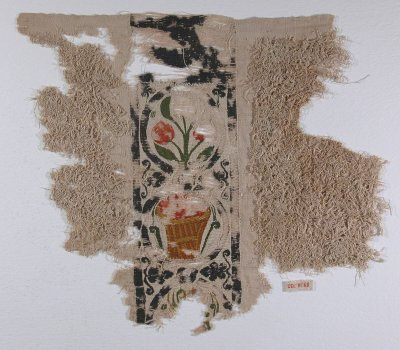Fragment with a Band of Baskets and Plants and a Loop Pile
Not on view
Looped weave, formed from added weft threads that extend from the surface of the fabric, was produced in Egypt from as early as the Pharaonic period and was commonly used for domestic textiles. In the Byzantine period such fabrics continued to be used for interior furnishings but were also used for clothing. Loops of linen pile, found on the interior and exterior of tunics and possibly mantles as well, provided added warmth.
Due to rights restrictions, this image cannot be enlarged, viewed at full screen, or downloaded.
This artwork is meant to be viewed from right to left. Scroll left to view more.





